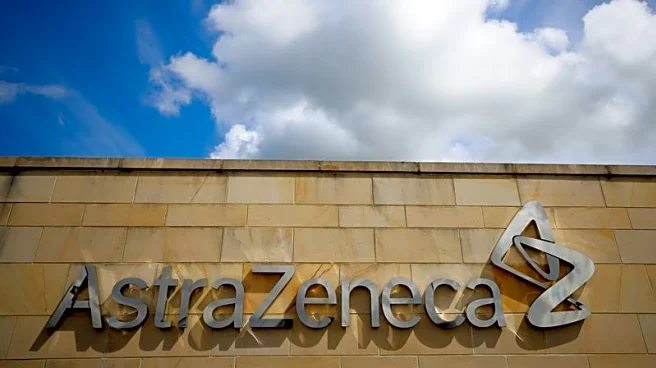What's Happening?
AstraZeneca has announced a pause on its planned £200 million investment at a research site in Cambridge, UK. This decision is a significant setback for the UK pharmaceutical industry, which has been facing challenges due to reduced government support. The project was initially expected to create 1,000 jobs and was part of a broader investment strategy announced by the previous UK government. The pause follows a similar decision by Merck, which recently scrapped a £1 billion expansion in the UK, citing insufficient government investment. AstraZeneca's move comes as President Trump pressures pharmaceutical companies to increase their investments in the United States, with the company already committing $50 billion to U.S. medicines manufacturing and research and development. The UK has seen a decline in its spending on medicines, dropping from 15% to 9% of the NHS budget over the past decade, while other developed countries spend between 14% and 20%.
Why It's Important?
The decision by AstraZeneca to halt its investment in the UK underscores the shifting dynamics in the global pharmaceutical industry, where companies are increasingly drawn to the U.S. due to favorable investment conditions and political pressure. This move could have significant implications for the UK economy, particularly in terms of job creation and the country's standing as a hub for pharmaceutical research and development. The reduction in government support for the industry in the UK contrasts with the aggressive investment strategies being pursued in the U.S., potentially leading to a talent and resource drain from the UK. This development highlights the broader challenges faced by the UK in maintaining its competitiveness in the global pharmaceutical market.
What's Next?
As AstraZeneca and other pharmaceutical companies reassess their investment strategies, the UK government may face increased pressure to enhance support for the industry to retain its competitive edge. This could involve revisiting policies related to funding and incentives for pharmaceutical research and development. Meanwhile, the U.S. is likely to continue attracting significant investments from global pharmaceutical giants, bolstered by favorable policies and economic conditions. The ongoing shifts in investment patterns may prompt further strategic realignments within the industry, affecting stakeholders across the supply chain.












